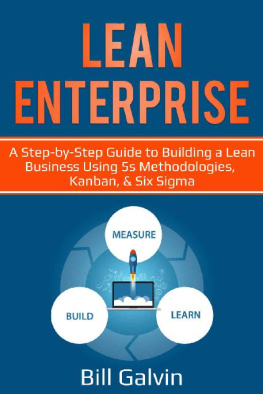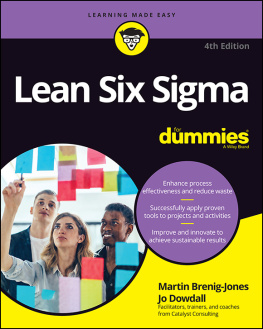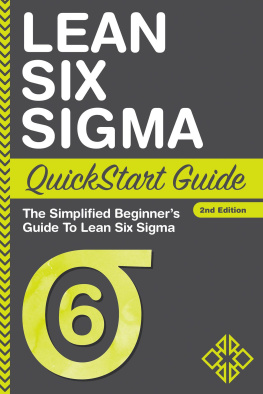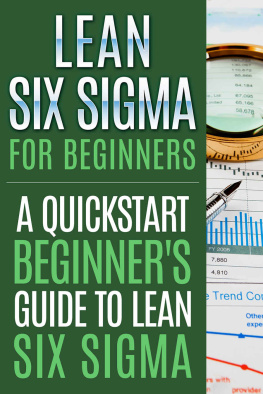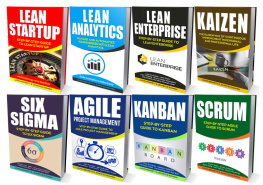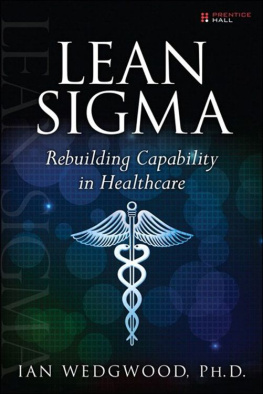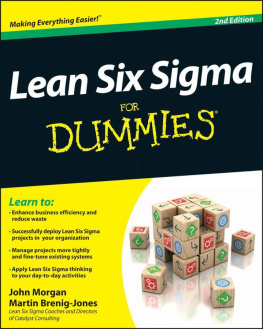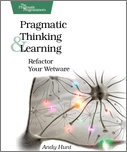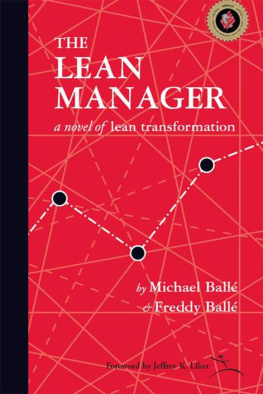Bill Galvin - Lean Enterprise: A Step-by-Step Guide to Building a Lean Business Using 5s Methodologies, Kanban, & Six Sigma (Lean Six Book 6)
Here you can read online Bill Galvin - Lean Enterprise: A Step-by-Step Guide to Building a Lean Business Using 5s Methodologies, Kanban, & Six Sigma (Lean Six Book 6) full text of the book (entire story) in english for free. Download pdf and epub, get meaning, cover and reviews about this ebook. year: 2019, genre: Business. Description of the work, (preface) as well as reviews are available. Best literature library LitArk.com created for fans of good reading and offers a wide selection of genres:
Romance novel
Science fiction
Adventure
Detective
Science
History
Home and family
Prose
Art
Politics
Computer
Non-fiction
Religion
Business
Children
Humor
Choose a favorite category and find really read worthwhile books. Enjoy immersion in the world of imagination, feel the emotions of the characters or learn something new for yourself, make an fascinating discovery.
- Book:Lean Enterprise: A Step-by-Step Guide to Building a Lean Business Using 5s Methodologies, Kanban, & Six Sigma (Lean Six Book 6)
- Author:
- Genre:
- Year:2019
- Rating:5 / 5
- Favourites:Add to favourites
- Your mark:
- 100
- 1
- 2
- 3
- 4
- 5
Lean Enterprise: A Step-by-Step Guide to Building a Lean Business Using 5s Methodologies, Kanban, & Six Sigma (Lean Six Book 6): summary, description and annotation
We offer to read an annotation, description, summary or preface (depends on what the author of the book "Lean Enterprise: A Step-by-Step Guide to Building a Lean Business Using 5s Methodologies, Kanban, & Six Sigma (Lean Six Book 6)" wrote himself). If you haven't found the necessary information about the book — write in the comments, we will try to find it.
Bill Galvin: author's other books
Who wrote Lean Enterprise: A Step-by-Step Guide to Building a Lean Business Using 5s Methodologies, Kanban, & Six Sigma (Lean Six Book 6)? Find out the surname, the name of the author of the book and a list of all author's works by series.
Lean Enterprise: A Step-by-Step Guide to Building a Lean Business Using 5s Methodologies, Kanban, & Six Sigma (Lean Six Book 6) — read online for free the complete book (whole text) full work
Below is the text of the book, divided by pages. System saving the place of the last page read, allows you to conveniently read the book "Lean Enterprise: A Step-by-Step Guide to Building a Lean Business Using 5s Methodologies, Kanban, & Six Sigma (Lean Six Book 6)" online for free, without having to search again every time where you left off. Put a bookmark, and you can go to the page where you finished reading at any time.
Font size:
Interval:
Bookmark:
Congratulations on downloading Lean Enterprise and thank you for doing so.
The following chapters will discuss everything that you need to know about the Lean system. Many businesses have heard about the Lean system and they want to implement it into their own process to see all of the benefits. This guidebook will take some time to explore how to work with the Lean process and the different ways it is able to benefit your business.
Inside this guidebook, we will take a closer look at the Lean system. We will look at what Lean is all about, which industries can benefit from it, some of the tools that you should use to get the most out of Lean, and even how to make your own value stream map so you know exactly which parts of the process you need to work to improve first.
From there, we will move into some of the other things that you need to know to work with the Lean system. We will discuss how you can run a Lean office, what the 5Ss are all about, how Kanban fits into this process and more. When you are done with this guidebook, you will be able to determine if the Lean system is the right choice for you, and you will know all of the steps that are needed to implement this system in your business and reduce waste in the process.
When you are ready to take a look at the Lean system and get it to work for your business, make sure to take a look at this guidebook to help you get started.
There are plenty of books on this subject on the market, thanks again for choosing this one! Every effort was made to ensure it is full of as much useful information as possible, please enjoy!
A s a whole, you are able to think about this process of Lean as a group of tools that are useful and can be called up in order to identify if there is any waste in the current system, either for the business overall or for an upcoming project. Lean is all about reducing waste. There are some businesses that will take a look at the Lean process because they want to fix the waste and issues within the whole business. They may see that they have too much time between processes, they see that there are a lot of customer complaints, or they run into other issues along the way. Other businesses may just want to work with just fixing and reducing the waste in just one process within them.
With Lean, there is going to be more focus given to reducing costs, while also improving how the production goes any time that is possible. This can be accomplished by identifying the small steps that are needed and then considering the ways that they can be completed in a manner that is more effective. There are a lot of different steps that will show up in the Lean methodology, and we will talk about some of them. Some that you may want to utilize with Lean includes:
- Pull systems
- Single minute exchange of die, or the SMED.
- Single point of scheduling
- Mixed model processing
- Total productive maintenance
- Multi-process handling
- Rank order clustering
- Control charts
- A restructuring process with the working cells
- The elimination of a process called time batching
- Error proofing
- 5S value stream mapping.
Beyond the tools above, Lean is going to be made up of a few principles that are all loosely connected thanks to the idea of reduction of costs and eliminating wastes as much as possible. These would include load leveling, continuous improvement, production flow, visual control, automation, flexibility, waste minimization, building up good relationships with the suppliers, pull processing, reliable quality and more.
If these principles are used in the proper manner, it will result in a small increase in the amount of profitability. If it is used in the proper way and it is given the opportunity, this kind of process is going to strive in order to ensure that all necessary items get the space they need and at the right periods of time. Most importantly, it is going to work to make sure that the ideal amount of items will move as needed so that your workflow remains stable while still allowing for any alterations that are needed without all the waste.
This is often going to be something that Lean can accomplish using the tools that we had listed above, but there is an added issue. For it to work, you must have buy-in or an agreement from everyone in the company. No matter what level they are at or Lean wont be effective for the short term or the long term. The Lean system in your business will only be as strong as the tools, and the support, that your company has for the process. If not everyone understands and is on board with the system, then this is when the Lean system can start to run into trouble.
The Lean method is one that many different businesses are going to try to implement into them. They want to be able to meet a bunch of different goals, and Lean can help them to get there. First, they want to make sure that they are able to provide a high-quality product to their customers. In order to retain these customers, reduce customer complaints, and other things that can waste time and resources in order to solve any problems.
Along with this, the company wants to figure out how to reduce any waste, reduce their costs, and earn more profits in the long run. Many times the waste that the company is able to get rid of with the Lean process will result in the customer receiving more value as well. It may take some time, and you may need to work through the process of Lean for a while, but when Lean is done properly, it can help your business out with all of those issues and can help it to grow more than ever before.
While the Lean process was originally developed to help with the industry of manufacturing and production, Lean has been so effective that many other businesses and industries have found ways to adapt it to their own needs. Every business wants to increase profits, reduce waste, enhance the customer experience, and just become overall more efficient. The Lean Process can work to make this happen.
Before you adopt any of the Lean processes, you must understand the two primary tenants. The first one is to focus on the importance of incremental improvement. The second is that the company needs to have a high level of respect for people, both those who purchase the product, and for their own employees.
With regard to the businesses focus on its incremental improvements, the improvements do not have to be done overnight. However, the business needs to strive in order to steadily and effectively improve their processes so that there is less waste present. You must take a good look at the processes that you currently use and see where things can be improved. Is there to much waiting time in one area? Are the suppliers not getting things in on time? Is there a lot of movement for one part, such as a paper needing approval from three different areas before starting? Are some of the departments that should be working together on different sides of the business?
All of these can lead to more waste in your business, and it is important to avoid them as much as possible. When you take a step back and look objectively at the system you have in place, you are likely to see several spots where you are able to make improvements. Even if these are small, or incremental changes, you will be amazed at what they can do to eliminate waste, speed up your process, and even help customers enjoy a better experience.
Font size:
Interval:
Bookmark:
Similar books «Lean Enterprise: A Step-by-Step Guide to Building a Lean Business Using 5s Methodologies, Kanban, & Six Sigma (Lean Six Book 6)»
Look at similar books to Lean Enterprise: A Step-by-Step Guide to Building a Lean Business Using 5s Methodologies, Kanban, & Six Sigma (Lean Six Book 6). We have selected literature similar in name and meaning in the hope of providing readers with more options to find new, interesting, not yet read works.
Discussion, reviews of the book Lean Enterprise: A Step-by-Step Guide to Building a Lean Business Using 5s Methodologies, Kanban, & Six Sigma (Lean Six Book 6) and just readers' own opinions. Leave your comments, write what you think about the work, its meaning or the main characters. Specify what exactly you liked and what you didn't like, and why you think so.

